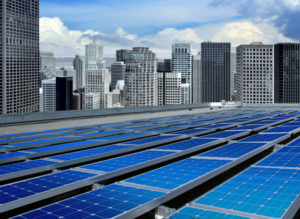Clean Energy Canada | Global Clean Energy Investment Bounces Back, Beats Expectations
January 13, 2015

National Investment in Clean Energy
[highchart id=”237″]
It’s been a good year for wind, solar, biomass, and small hydro.
Late last week, Bloomberg New Energy Finance (BNEF) released its annual analysis of global clean-energy investment trends, and the results were even better than the research firm had anticipated.
On a global basis, investors moved USD$310 billion into clean energy projects last year, up 16 percent over the previous year. While this figure still falls short of the 2011 record of USD$317.5 billion—which was fuelled by government stimulus programs in the midst of the Great Recession—last year’s bottom line was five times higher than investment levels just a decade earlier.
Solar led the way for the second year running; the technology made up almost half of the year’s total clean energy investment with US$149.6 billion committed, followed by wind at US$99.5 billion.
BNEF attributed the jump in global investment to strong clean energy deployment in key markets, including Canada. Clean energy investment in this country jumped a significant 26 percent over 2013, topping US$9 billion.
Other Canadian highlights from 2014 included:
- BluEarth Renewables raised CAD$81 million of equity financing, bringing its total amount of money raised to CAD$250 million since it incorporated in 2010. In our recent Tracking the Energy Revolution, we named the company’s CEO our Canadian Innovator of the Year.)
- Ontario’s 270MW K2 wind complex secured a stellar CAD$850 million in financing. Once online, the project will produce enough power to light up approximately 100,000 homes per year.
Once again, China proved central to the clean energy story, with USD$30.4 billion and USD$38.3 invested in solar and wind, respectively. In 2014, China’s total clean energy investment (USD$89.5 billion) alone accounted for 28 percent of global clean energy investment—a good reminder that our governments should make plugging into Chinese markets a key trade priority.
Also noteworthy: The 34 percent bump (USD$73.5 billion) in investment into smaller scale distributed power projects led by rooftop solar, which cemented a shift away from large, centralized power stations. In the face of concerns about the prospect of a “utility death spiral,” many big utilities jumped on the distributed power bandwagon by adapting their business models to take advantage of consumer interest in rooftop solar.
So what lies in store for clean energy in 2015? We’ll have to wait and see, but as my colleague Clare Demerse recently wrote, while some are tying the fortunes of clean energy investment to oil prices, the underlying factors that have been driving clean power investment don’t look poised to change.